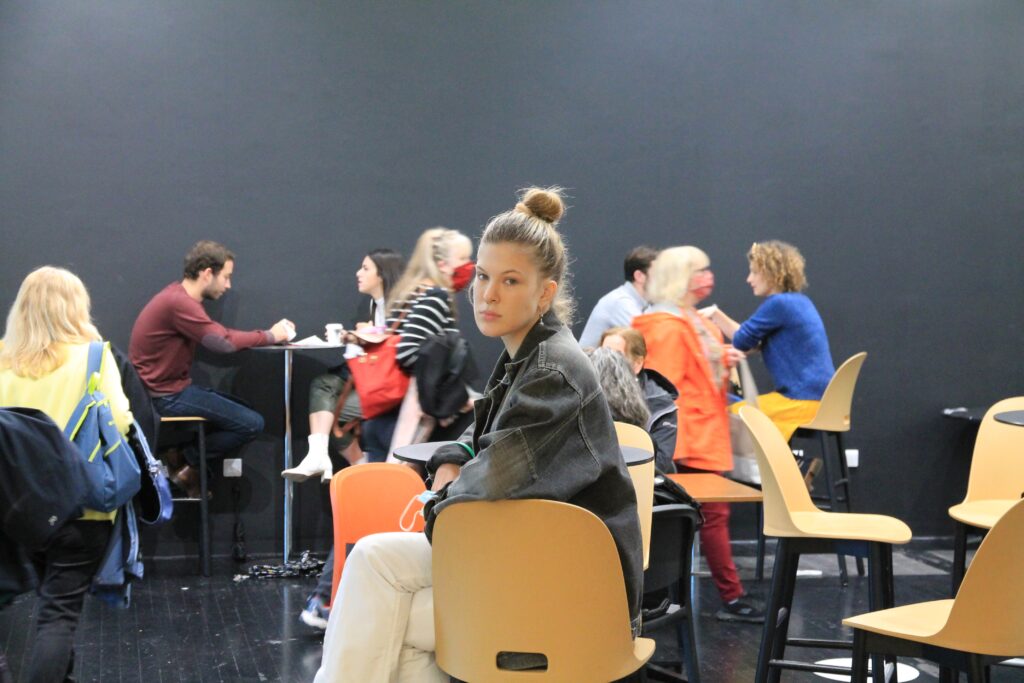Introduction
Feeling drained after social gatherings is a common experience for many introverts. But what if you could shift this dynamic? Imagine transforming from often feeling overwhelmed in social settings to navigating them with ease and confidence. This shift, known as the introvert to extrovert transition, is not just a possibility but a reality for some. It’s an unconventional journey, yet one that’s gaining traction. In this article, we’ll explore the reasons behind social fatigue and offer insights and strategies for those who are intrigued by the idea of evolving their social capabilities. Stay tuned as we delve into the world of social energy from an introvert’s perspective. 🌟✨🔍🔄

Introduction to Social Fatigue: Understanding the Phenomenon of Being Quickly Drained by Social Interactions
In our journey to understand social fatigue, especially prevalent among introverts, it’s crucial to first grasp its roots. Social interactions, while energizing for some, can be a significant energy drain for others. This phenomenon, often baffling to those who thrive in social settings, hinges on how different individuals process and react to social stimuli. If you’re curious about your own social energy patterns, taking our introvert test can be an eye-opening start. This advanced test is designed to help you better understand your unique social inclinations.
For introverts, social settings often require a high level of mental and emotional engagement. It’s not just about participating in conversations but also about processing the plethora of social cues, body language, and tones of voice present in these interactions. This continuous processing, analysis, and adaptation can be mentally taxing, leading to what is commonly termed as ‘social fatigue.’
Moreover, introverts tend to process experiences deeply, reflecting on interactions long after they’re over. This deep processing, while valuable for insight and understanding, can further amplify feelings of exhaustion. It’s akin to running a mental marathon, where every conversation adds more miles to the journey.
Adding to this, many introverts find it challenging to establish boundaries in social scenarios. They might feel obligated to engage more than they’re comfortable with, leading to a depletion of their social energy reserves. This is especially true in environments where socializing is expected or considered the norm, like workplaces or family gatherings.
Understanding this intrinsic aspect of introvert psychology is essential. It’s not about one’s social skills or the desire to interact with others but rather about the internal cost of these interactions. Recognizing and respecting this cost is the first step in managing social energy more effectively and navigating social landscapes in a way that honors one’s natural inclinations. 🧠💡🌱🔄

Introvert vs Extrovert: How Personality Types Affect Social Energy Levels
As we delve deeper into the dynamics of social energy, the distinction between introverts and extroverts becomes more apparent. While introverts often find social interactions draining, extroverts typically gain energy from the same situations. This difference is rooted in the varying ways each personality type processes and responds to social stimuli. If you’re intrigued by these dynamics and wish to explore them further, joining our intro to extro community can be a transformative step. This community provides a platform for discussions and insights on the nuances of introvert and extrovert experiences.
The fundamental distinction lies in the source of stimulation. Extroverts are energized by external stimuli – they thrive in vibrant social environments, drawing energy from the people and activities around them. Introverts, conversely, often find their energy sapped in these same environments. They require quiet, solitary spaces to recharge, as their energy comes from within. This isn’t to say that introverts don’t enjoy socializing; rather, the type and duration of social interaction are key factors. Small, intimate gatherings are usually more comfortable for introverts compared to large, noisy parties.
Understanding this dichotomy is crucial in navigating social spaces. For introverts, being aware of their energy limits and planning social interactions accordingly can prevent the overwhelming exhaustion that often follows prolonged socializing. On the other hand, extroverts might need to recognize that their introverted peers could require more downtime and may not always be up for spontaneous social plans.
This understanding also fosters better interpersonal relationships. When friends, family, and colleagues appreciate these differences, they can create environments that cater to both personality types. It’s about finding a balance where both introverts and extroverts feel comfortable and energized.
Embracing this diversity in social energy can lead to more harmonious and understanding social interactions. Whether you’re an introvert, extrovert, or somewhere in between, recognizing and respecting these differences is key to navigating the social world effectively. 🌍🤝🔋🔄

The Physical Aspect: How Physical Environment and Crowds Affect Social Energy.
The physical environment and the presence of crowds play a pivotal role in determining how social interactions impact our energy levels. For those considering a transition in their social approach, understanding these factors is crucial. Our intro to extro roadmap offers unique perspectives and strategies distinctly different from conventional guides, helping you navigate these physical aspects with greater awareness and ease.
Crowded environments, like busy parties or bustling public spaces, often present overwhelming sensory input. For introverts, processing this barrage of stimuli – from loud conversations to bright lights – can be exhausting. It’s not just the social aspect but the sensory overload that contributes to the rapid depletion of energy. Extroverts, on the other hand, may find these environments stimulating and energizing. They draw energy from the vibrancy and chaos that introverts find draining.
The layout and nature of a space also significantly affect social stamina. A cramped, noisy room poses more challenges than a spacious, well-lit area where one can easily move around and take breaks from socializing. Having quiet corners or outdoor spaces in a social venue can provide much-needed respite for those who need to step away and recharge.
Moreover, the physical act of navigating through crowds can be taxing. The need to constantly adjust one’s position, maintain personal space, and be alert to the movements of others adds to the mental load. This aspect is often overlooked but is a key contributor to the feeling of exhaustion after social events.
Recognizing and respecting these physical factors is essential, especially for introverts venturing into more extroverted territories. By choosing environments that align with your social energy levels and being mindful of the physical aspects of social settings, you can manage your energy more effectively. This understanding empowers you to engage in social interactions on your terms, leading to more fulfilling and less draining experiences. 🌐🏞️🔊🔄

The Digital Age Dilemma: How Social Media Affects Real-Life Social Stamina.
The Digital Age has revolutionized the way we interact, bringing with it a unique set of challenges and dynamics that affect our social stamina. In this era of constant online connectivity, the boundaries between personal and public spaces have blurred, creating new dimensions of social interactions that can be just as exhausting as face-to-face encounters. This shift has a profound impact on how we manage our social energy, especially for those who find real-life interactions draining.
Social media, a cornerstone of modern communication, exemplifies this new reality. Platforms designed to connect us with friends, family, and colleagues around the globe also bombard us with an endless stream of information, opinions, and interactions. For introverts, the pressure to be constantly available and responsive online can be overwhelming. The expectation to keep up with social media updates, messages, and emails can create a sense of obligation and urgency, leading to a form of digital fatigue that mirrors the exhaustion felt in physical social settings.
Moreover, the nature of online interactions often lacks the depth and meaningful connections found in face-to-face conversations. The superficiality of these interactions can leave one feeling unfulfilled, yet drained, as if having expended energy for little return. The paradox of being connected yet feeling isolated is a hallmark of the Digital Age dilemma.
Furthermore, the anonymity and distance afforded by digital platforms can sometimes lead to negative interactions and cyberbullying, adding an additional layer of stress and anxiety to online socializing. Navigating these complex digital landscapes requires a careful balance of engagement and detachment, ensuring that our online presence doesn’t deplete our real-life social energy.
Understanding the impact of digital interactions on our social stamina is crucial in this era. By setting boundaries on our digital consumption and being mindful of the quality of our online interactions, we can better manage our social energy in a world where the lines between virtual and real are increasingly blurred. 🌐💬🔋🔄
Exercise and Social Stamina: Boosting Social Energy Through Physical Activity
The relationship between exercise and social stamina might seem indirect at first glance, but physical activity plays a crucial role in enhancing our social energy. Regular exercise not only improves physical health but also contributes significantly to mental and emotional well-being, factors that are intimately tied to how we engage in social situations.
Engaging in regular physical activity can lead to increased levels of endorphins, often referred to as the body’s “feel-good” chemicals. These endorphins boost mood and create a sense of well-being, which can be incredibly beneficial in reducing the anxiety and stress often associated with social interactions, particularly for introverts. When we feel better physically, we are more likely to feel confident and positive in our social engagements, making interactions less draining and more enjoyable.
Furthermore, exercise enhances cognitive function and concentration. This improved mental clarity and focus can be a significant asset in social settings, where keeping up with conversations and processing social cues is crucial. A sharper mind can navigate these situations more effortlessly, reducing the mental fatigue that often accompanies socializing.
Physical activity also provides an opportunity for solitary time and reflection, essential for introverts who recharge in solitude. Activities like running, cycling, or even yoga can serve as meditative practices, allowing individuals to process their thoughts and feelings in a peaceful setting. This time spent in reflection can be incredibly rejuvenating, equipping one with the mental and emotional energy needed for social interactions.
In addition to these benefits, engaging in group sports or fitness classes can also serve as a gentle introduction to socializing in a structured and goal-oriented environment. For those looking to enhance their social stamina, these settings offer a dual benefit: improving physical health while gradually increasing comfort with social interactions.
Embracing exercise as a tool to boost social energy is a holistic approach to enhancing social stamina. By incorporating regular physical activity into our routines, we can build resilience, improve mood, and cultivate a more enjoyable and less exhausting social life. 🏃♂️🧘♀️💪🔄
Recharging Your Social Batteries: Effective Ways to Recover After Socializing
Recharging your social batteries after engaging in draining interactions is an essential aspect of managing social stamina, particularly for those who find these interactions exhausting. This recovery process is not just about taking time away from socializing; it involves deliberate actions and strategies that replenish our mental and emotional energy, allowing us to engage in future social situations more effectively and with renewed vigor.
One effective way to recharge is through solitude and quiet reflection. Introverts often find peace and rejuvenation in alone time, where they can process their thoughts and experiences away from the noise and demands of social environments. This could involve activities like reading, meditating, or simply sitting in a quiet space. These moments of solitude provide a sanctuary where one can decompress and regain balance.
Engaging in hobbies and interests that bring joy and relaxation is another vital aspect of recharging. Whether it’s painting, gardening, playing a musical instrument, or any other activity that brings personal fulfillment, these pursuits offer a respite from the social world and a chance to engage in something deeply satisfying on an individual level. They serve as a reminder of one’s identity beyond social roles and expectations.
Quality sleep is also crucial in this recovery process. Lack of adequate rest can amplify feelings of social exhaustion and reduce our capacity to handle future interactions. Ensuring a good night’s sleep, therefore, is not just beneficial for physical health but also for maintaining social energy.
Additionally, connecting with close friends or family members in a comfortable, low-pressure setting can be part of the recharging process. These intimate interactions, devoid of the stress of larger social gatherings, can be healing and reaffirming, offering emotional support and understanding.
Understanding and respecting your need to recharge is key to maintaining a healthy social life. By incorporating these strategies into your routine, you can ensure that your social batteries are well-maintained, allowing you to approach social interactions with enthusiasm and resilience. 🌟📚🛌
Conclusion
In conclusion, navigating the complexities of social interactions, especially for those who feel drained quickly by them, requires a multifaceted approach. Understanding the underlying reasons why social settings can be exhausting, recognizing the impact of physical environments and digital interactions, leveraging the benefits of exercise, and appreciating the importance of recharging are all crucial elements in managing social energy.
Each individual’s journey is unique, and what works for one person may not work for another. It’s important to explore and find the right balance that suits your personality and lifestyle. Remember, it’s okay to embrace your natural inclinations, whether you lean more towards introversion or extroversion, and it’s equally okay to seek a change in how you interact socially.
The key takeaway is to be mindful of your social energy levels and to take proactive steps to manage them effectively. This might mean setting boundaries, choosing social settings that align with your comfort levels, or finding creative ways to recharge after demanding social interactions.
By doing so, you can transform your social experiences from draining obligations into enjoyable and fulfilling encounters. Whether you’re an introvert looking to expand your social stamina or someone simply seeking to understand the dynamics of social energy better, the journey towards more rewarding social interactions is a continuous process of learning, adapting, and growing.
So, embrace your unique social rhythm, respect your need for balance, and step forward confidently into the social world, equipped with the insights and strategies to navigate it with ease and joy. 🌍✨💪🔄




